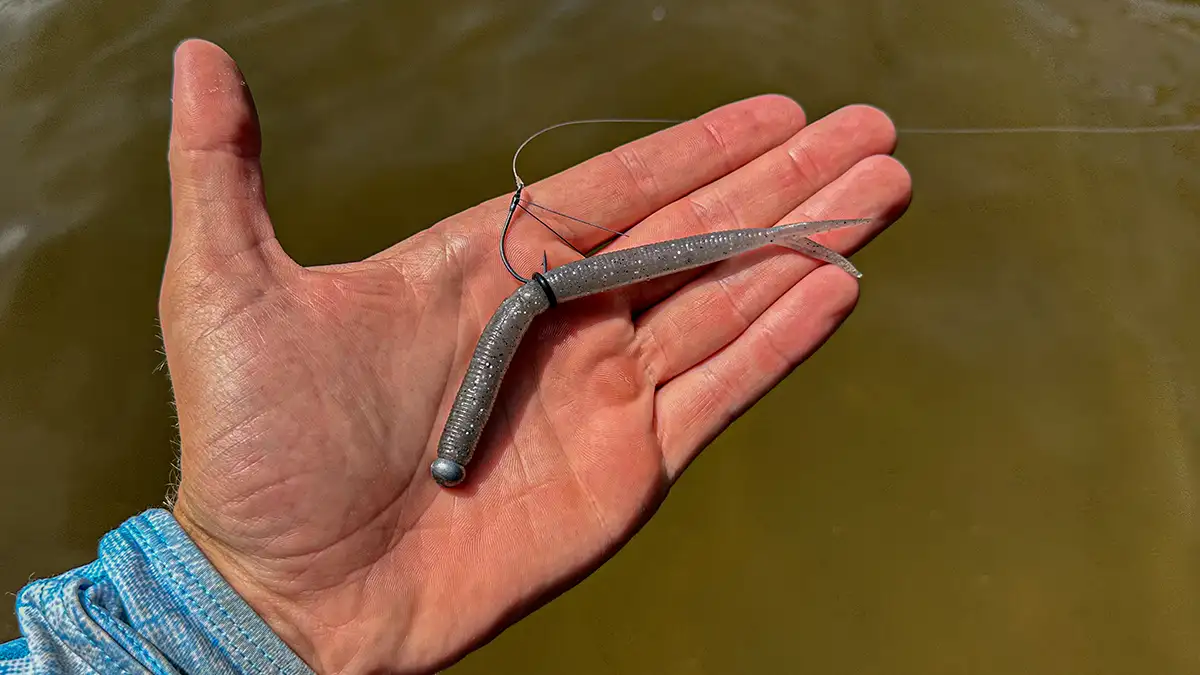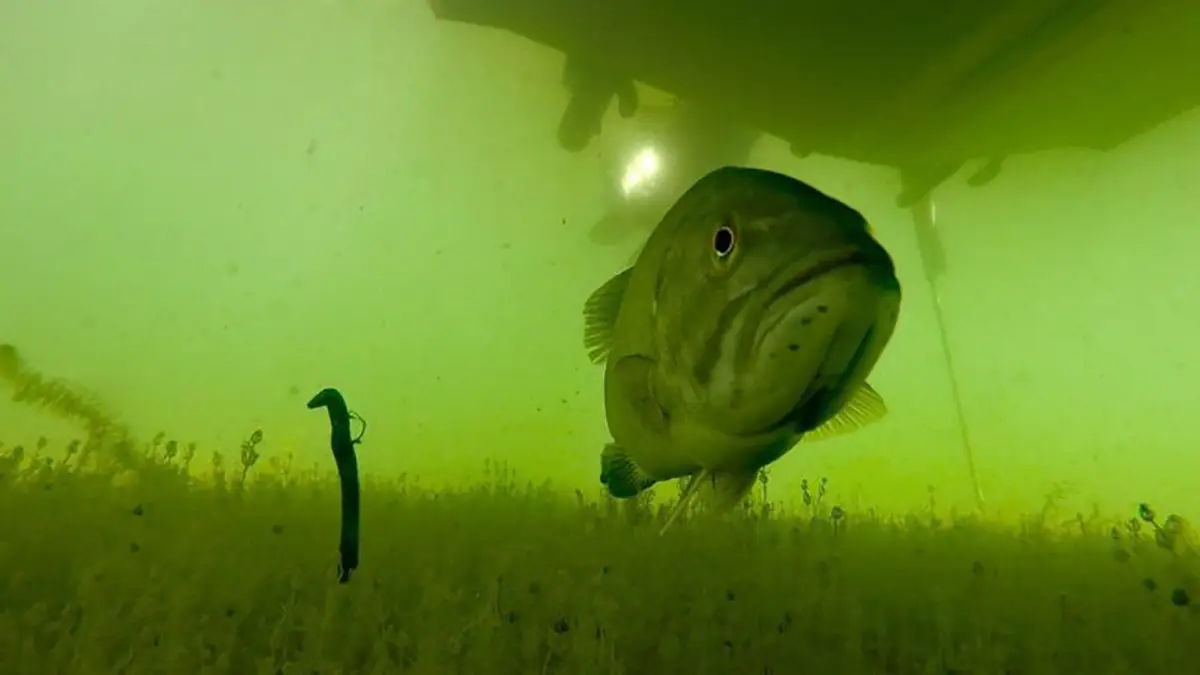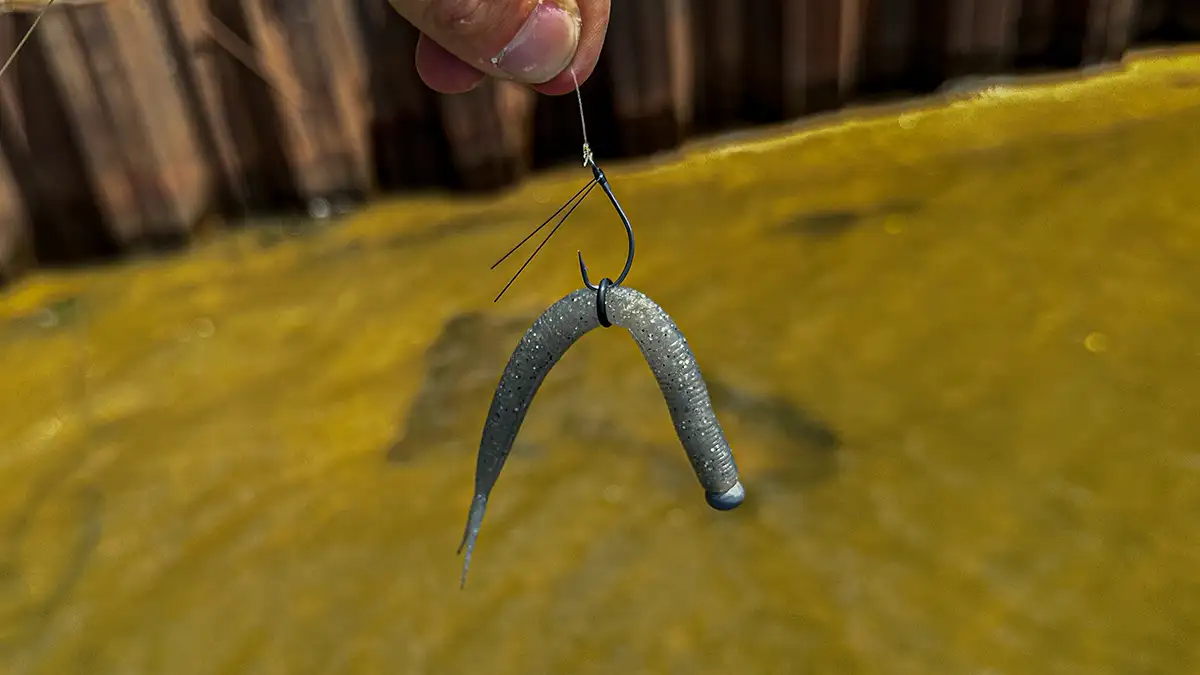Throughout my early years of fishing I would almost strictly throw a wacky rigged stick bait. This is largely because I never fished offshore and it’s something fish always bite. The simplicity of this bait made sense to me and I seemed to always catch fish on it. As I’ve progressed in fishing I slowly steered away from this rig, largely because I was targeting fish offshore. However, in recent years this rig has made a comeback. This comeback is largely due to the popular technique of Neko Rigging. This simple rig allows anglers to fish wacky rigged baits at nearly any depth and its quickly become one of my go-to bite getters.
WHAT IS A NEKO RIG
A Neko Rig is simply a wacky rigged stick bait with a nail weight inserted in the head. You can use both exposed and weedless hooks for this style of fishing and it’s great for both heavy cover and open water scenarios. I’ll interchange these hooks based on water clarity and the amount of cover present. Some of my favorite hooks for this rig include the Gamakatsu G-Finesse Stinger Weedless Wacky Hook and the Gamakatsu G-Finesse Stinger Neko/Wacky Hook. Another important component in fishing a Neko rig is using a wacky rig O-ring tool. This tool inserts a rubber O-ring around your soft plastic, providing a sturdy location to bury your hook. This tool is especially helpful when skipping this bait round docks, overhangs and other shallow cover. Last but certainly not least, a nail weight is another crucial component for setting up your Neko Rig. This determines the fall rate of your bait and allows you to fish a wacky rig at virtually any depth. I generally cycle through a variety of different weights based on fall rate and the depth I’m targeting.
WHEN TO THROW A NEKO RIG
The next step in becoming a successful Neko Rig angler is understanding the right conditions. A Neko Rig is an extremely versatile bait that can be throwing 365 days out of the year. While this bait is undeniably versatile, weather conditions still play a vital role in this baits success. One of the biggest limiting factors in throwing a Neko Rig is wind. As you typically throw a Neko Rig with a light weight, wind can greatly affect your casting accuracy and fall rate with this style of lure. Wind will often cause a bow in your line causing the bait to shift off course and hinder its fall rate. One of the best ways to combat this is casting directly into or with the wind. This prevents the bow in your line and allows your bait to fall at its desired rate.
My ideal conditions for throwing a Neko rig is slick calm with bluebird skies. These conditions typically lead to a slow bite, which is when I really think this bait shines. Furthermore, these conditions allow for maximum casting accuracy and a consistent fall rate. The subtle nature of this bait allows you to get bites when fishing is slow, and it’s something I almost always have tied on in these conditions. I throw this bait in all four seasons, however I often vary how and where I fish this bait based on the time of year.
NEKO RIG APPLICATIONS
You can fish a Neko Rig at nearly any depth, however most only target fish on the bottom. While dragging this bait is still a successful way to catch fish, I like to target suspended fish with it as well. This is especially true on spotted bass fishies such as Hartwell and Lake Lanier. On these fisheries the majority of bass suspend out in the water column. These fish are extremely pressured and are often hard to trick into eating a moving bait such as a jig and minnow or jerkbait. One of the best ways I’ve found to get this fish to commit is swimming a Neko Rig over their head, then letting it fall to the bottom. These fish will often follow the bait down, then commit once it reaches the bottom. This is a great way to catch suspended fish throughout the entire year, and its quickly become one of my favorite offshore fishing techniques.
Targeting spawning fish with a Neko Rig is another extremely efficient way to catch trophy sized bass. I’ll use this lure on anything from brush to rock, exchanging the hook style and weight based on cover and depth. This technique is especially effective this time of year as most fish are spawning in the southeastern United States. On my local fisheries we have a mix of both spotted and largemouth bass. Ive caught a plentiful amount of both on this style of lure, as its my go to choice for deep spawning fish. I generally target brush for spawning largemouth as they tend to relate to this type of cover in my neck of the woods. Rock typically does better for spotted bass as they prefer this type of cover to spawn. Casting this lure at specific fish on forward facing sonar is one of my favorite ways to target fish with a Neko rig. You’ll often have to make numerous casts at a fish, however once they see it you can typically get them to bite.
ADJUSTING YOUR WEIGHT
Adjusting the size of your nail weight is another way to increase your success when throwing a Neko rig. This not only determines how deep you can fish this bait, but it also alters your presentation. I often determine my weight size based on the fishes mood and water temperature. My general rule of thumb is whenever the water is cold, go heavy, when its hot go light. My thought process behind this is generating a reaction strike. In the winter fish are far less willing to chase down a bait. Because of this I’ll try and generate a reaction strike by increasing the weight of my bait. Letting your Neko Rig quickly fall past a fish is a great way to trigger their predatory instinct to bite. While I often do this in the winter, It’s important to pay attention to how the fish react to your bait regardless of the season. If you’re getting lots of followers and not many bites, try altering your weight size
In the spring and summer months however, I generally start with a lighter weight. Fishing pressure is at an all time high this time of year, so I really like the finesse presentation a lighter weight provides. This is also my preferred style for fishing brush and heavy cover. The lighter weight keeps you bait from falling deep into the brush, preventing your bait from getting snagged. While weight size is a crucial component in getting bit, choosing the right soft plastic is another important factor.
CHOOSING THE RIGHT SOFT PLASTIC
I’ve Neko rigged everything from a fluke to a ribbon tail worm. While all of these baits have their own time and place, I generally stick with three styles of soft plastics. These include a fluke style bait, a fatter straight tail worm, and a longer style trick worm. I prefer the fluke style bait when targeting suspended fish. This gives off the impression of a dying baitfish perfect for triggering suspended fish into biting. One of my favorite baits for this application is a 5-inch Zoom Fluke Stick Jr.
When fishing for spotted bass however, I tend to go with a fatter straight tail worm. From my experience I’ve found that spots prefer this style of worm, however it gets bit by all species of bass. Some of my favorites include the Yamamoto Senko and Berkley General. These are great for fish relating to the bottom, especially during the spawn. Last but certainly not least, I throw a longer trick worm when fishing for largemouth. I like the larger profile when targeting this species of fish as it does a good job at weeding out the smaller bites. Some of my favorite worms for this application include a Zoom Magnum Trick Worm and a Reaction Innovations Flirt Worm.
A Neko Rig is an extremely versatile bait that all anglers should have in their tool box. Although this bait is simple in nature, there is a variety of different ways you can fish it. Paying attention to the size of your weight, style of your worm and overall mood of the fish are three great ways to ensure success when fishing this bait. Whether you’re a beginning angler or have years of experience, a Neko Rig is something you should always have on the deck of your boat.

















